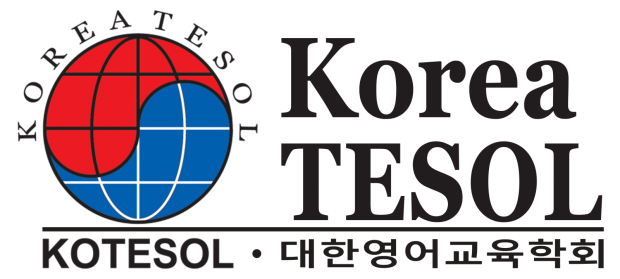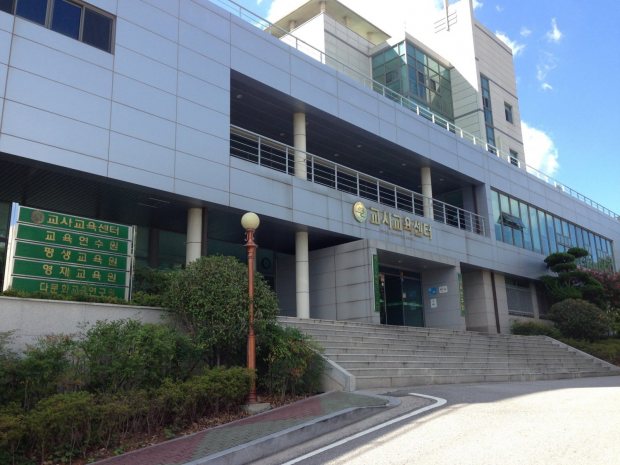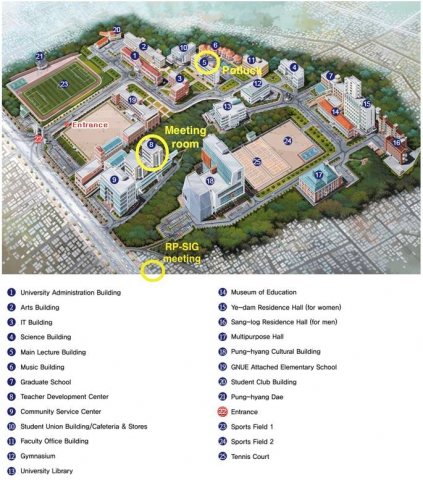

Gwangju-Jeonnam Chapter July Meeting
.
––– Morning Reflective Practice Session –––
Time: 11:00 am - 12:30 pm (2nd Sat., July 14)
Location: Coffee Lab Mujii, near GNUE. (Ground floor of 광주우리교회 Building. Map at bottom.)
ㅡ Topic: Mapping Classroom Action
ㅡ Facilitator: Bryan Hale
––– MAIN MEETING SCHEDULE –––
Time: 2nd Saturday, July 14, 2018, 1:45ㅡ5:00 pm
Location: Gwangju National University of Education (GNUE), Teacher Training Center (교사교육센터) 1st Floor; Room 811. Detailed directions HERE.
1:45 pm: Sign-in and Meet-and-Greet (Admission: Free for newcomers. Membership welcomed.)
2:00ㅡ2:50 pm: Presentation 1
ㅡ Multimodal Writing: A Key for Creative Learning and Teaching
ㅡ Teri An Joy G. Magpale (Wonkwang University)
2:50ㅡ3:10 pm: Refreshment Break
3:10ㅡ4:00 pm: Presentation 2
ㅡ Novel Pair Information Gap Activities for Mixed-Level Classes
ㅡ Daniel Corks (Woosong University)
4:10ㅡ4:45 pm: Swap-Shop Presentations
Share your Teaching Ideas, Classroom Activities, and Teaching Wisdom with the group.
(Everyone is encouraged to share [up to 5-6 min. each]. Short tidbits are welcomed. Handouts also welcomed.)
4:45 - 5:00 pm: Announcements / Drawing for Door Prizes / Closing
(After-Meeting Dinner at The First Alleyway)
Session Summaries
Multimodal Writing: A Key for Creative Learning and Teaching
By Teri An Joy G. Magpale
A multimodal approach to writing in an ESL/EFL classroom can be a source of creativity for both teachers and students. It focuses on the combination of text, audio, and image as individual modes and how these can be creatively combined to produce meaning and encourage interaction and learning in the classroom. By integrating multimodality into teaching writing, teachers can prepare learners to effectively communicate in these contexts.
Multimodal writing uses more than one mode to achieve its intended purpose. The modes are “visual, audio, gestural, spatial, or linguistic means of creating meaning” (Selfe, 1995). Accordingly, this presentation attempts to explain the significance of multimodal writing in teaching writing in an ESL/EFL setting. It will also present samples of multimodal projects, along with assessment techniques, that teachers can use inside the classroom.
Introduction
This presentation emphasizes that a multimodal approach can improve the learning process in an ESL/EFL writing classroom by enhancing interaction between teachers and learners, learners and input materials, and classroom communication in general. Ensuring fluid interaction and optimizing communication by appropriate selection and combination of modes by the teacher provides a framework for creative learning. Therefore, crucial to an understanding of the multimodal approach to writing is the interaction not only between teachers and students but also with input materials, the classroom environment, and external and abstract factors such as students’ cultural background, identity, and relationships with the external world.
What are Modes?
Underlying a multimodal approach are modes, which are visual, audio, text, or speech, and movement channels used in a classical classroom situation. There is nothing revolutionary about multimodality. Historically, communication has always involved different modes, but what has changed and is in evolutionary flux is communication in society at large. Through technology-induced interaction and connectivity, multimodality provides resources that challenge traditional forms of communication and even language itself. In the last few decades, the most noticeable shift has been from page to screen (Kress, 2010 p. 6), for example from chalk to PowerPoint, greatly influencing design and selection of resources.
Multimodal Writing
Multimodal writing encourages the students to produce works that use more than just words and letters to communicate a thought; they may include audio, video, photographs, drawings — basically, any visual element used to supplement the text in some purposeful way. When multimodal texts are viewed, analyzed, and created in the composition classroom, students and instructors are engaging in multimodal composition! Podcasts, blogs, collages, video or audio essays, comic strips, and storyboards all fall under the category of multimodal composition assignments.
Conclusion
In a broad sense, multimodal assignments can help our students develop visual and digital literacy, which is key in a world where new technologies are constantly emerging. Our students are already interacting in digital contexts that require multimodal writing. By assigning multimodal projects, we prepare our students to effectively communicate in these contexts.
References
Selfe, C. (2009). The movement of air, the breath of meaning: Aurality and multimodal composing. College Composition and Communication, 60(4). 616-663.
Kress G. (2010). Multimodality: A social semiotic approach to contemporary communication. London, UK: Routledge.
The Presenter

Teri An Joy G. Magpale is currently working as a professor in Wonkwang University in Iksan City, Jeollabukdo. She has presented at various international and regional research conferences. Her research interests include world Englishes, discourse analysis, and current pedagogical issues of ELT. She finished her Bachelor of Arts/Bachelor of Secondary Education major in English literature with honors at the Philippine Normal University-Manila. She finished her Master of Arts in teaching English at the De La Salle University-Manila.
____________________
Novel Pair Information Gap Activities for Mixed-Level Classes
By Daniel Corks
Information gap activities come in all shapes and sizes, but I find these activities often are not especially engaging. Students may find their language skills put to the test, but not their other cognitive abilities. Those same information gap activities, if done in their first language, wouldn’t be able to hold their attention. This is a principle that I try to hold myself to when designing materials: an activity should be engaging to students even if done in their first language.
Coming up with tasks that can hold a person’s interest independent of language ability solves two major issues I often have in my classrooms. The first is mixed-level classes with a very wide range of abilities, and the second is very low level students that have significant trouble understanding the teacher’s instructions.
For mixed-level classes, the advantage of a cognitively stimulating activity is clear. While an activity may be designed for the class’s median language level, higher-level students won’t be bored by the activity or mentally check out. In addition to that benefit, I find the high-level students will actually still use the upper ranges of their language ability to make sure their ideas are getting across effectively.
A cognitively stimulating activity can also benefit very low level students who have trouble following what their teacher is saying. If the core idea behind an activity is simple enough, then it can be explained for low-level learners with just a few simple words. The students will understand the goal of the activity, but it’s up to them to decide the best way to go about it, finding clever ways reach that goal despite lower language ability. These learners, rather than feeling like they’re struggling to keep up with their peers in a mixed-level class, also feel a sense of accomplishment for completing the task. All learners push their language ability to its limit in order to complete the task.
In this presentation I’ll explain the basic structure I use to create simple activities of this nature, and I’ll demonstrate two of the more involved ones I’ve made. One focuses on reading and interpreting song lyrics, and the second focuses on remembering, describing, and drawing faces.
The Presenter

Daniel Corks is a graduate of Sogang University in Seoul, South Korea, with a master‘s degree in applied linguistics in the field of second language acquisition. He is currently an assistant professor at Woosong University in Daejeon, South Korea, and a member of the Daejeon-Chungcheong chapter of KOTESOL.
____________________
Reflective Practice Session
Topic: Mapping Classroom Action

Facilitator: Bryan Hale
In this session we will use some ideas from complexity theory to reflect on action and behaviors that take place in our classrooms. Hopefully this reflection offers us new understandings about situations we want to change or about situations which suggest possibilities we want to open up.
___________________________
Photo: The Gwangju National University of Education (GNUE / 광주교육대학교), Teacher Training Center (교사교육센터), venue for our main meeting ㅡ 1st floor, Room 811.




